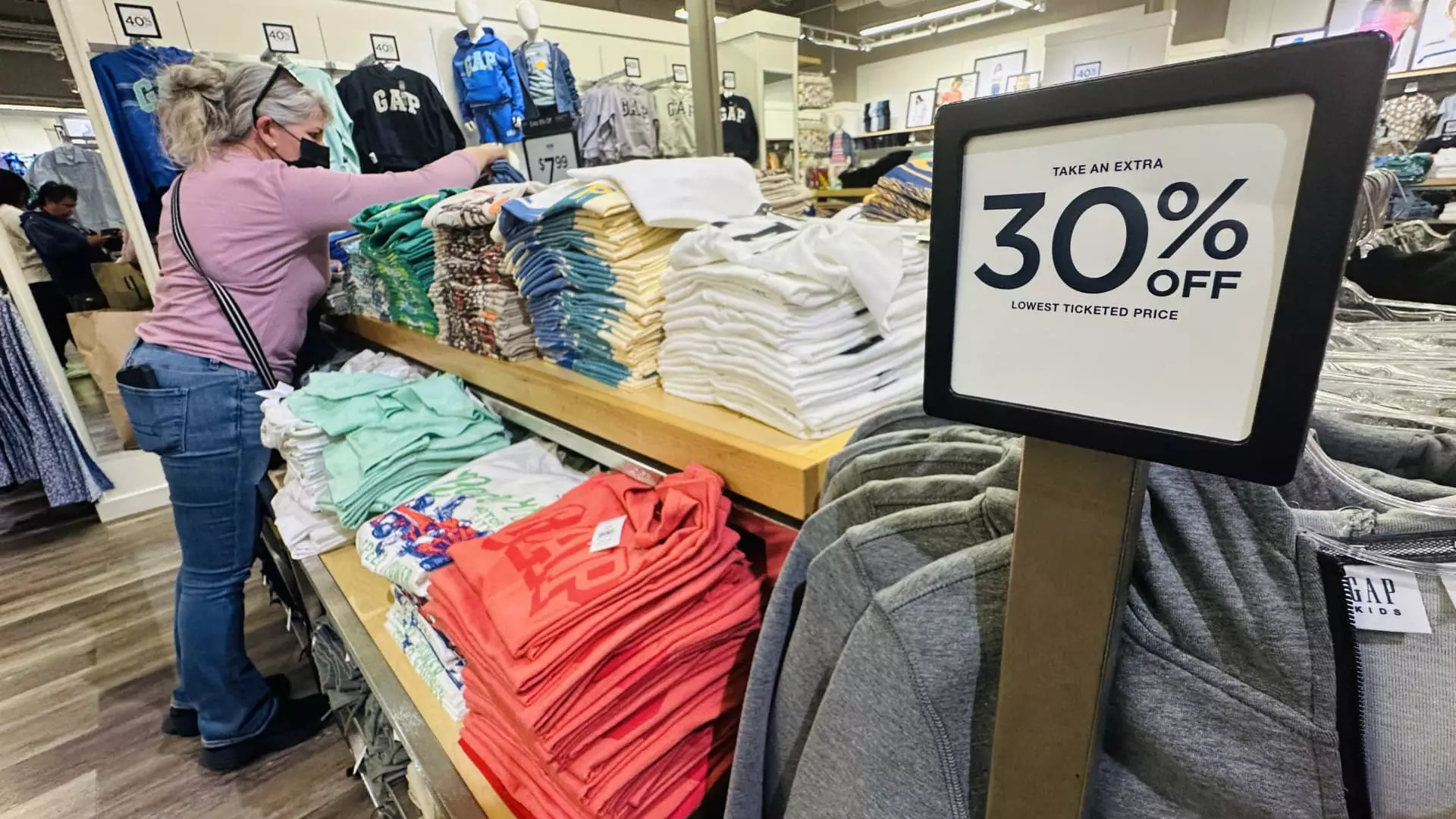The American apparel market is teetering on the brink of financial instability due to soaring tariffs on imported goods. With the Trump administration’s policies enforcing a staggering 145% tariff on Chinese products, clothing and footwear stand to suffer disproportionately. Experts assert that the initial impact is bound to elevate apparel costs by 64%, a figure that is both alarming and indicative of the trade war’s broader repercussions for the American consumer. This trend not only compromises the affordability of everyday clothing but also sends shockwaves through the economy, as it compounds the financial burdens faced by low- and middle-income families.
As tariffs increase, they’re essentially fresh taxes levied on consumers rather than foreign suppliers. As David French, the executive vice president of the National Retail Federation, pointedly noted, these tariffs are a tax on the importer that ultimately burdens the end consumer. The current system places unfair pressure on American shoppers, particularly those who can’t afford the luxuries that higher prices inevitably spawn.
The Tyranny of Tariffs: A New Economic Reality
Jarring statistics paint a stark picture of the current landscape: approximately 97% of clothing and shoes consumed in the U.S. are sourced from foreign markets, chiefly China and Vietnam. This overwhelming dependence on imports, exacerbated by escalated tariffs, threatens not only to inflate prices but also to instigate an inflationary spiral that could curtail consumer spending. The resultant economic strain could push budget-conscious shoppers to make often painful choices when it comes to their wardrobe.
Consumer behavior is already shifting, with three-quarters of shoppers engaging in “trade-down” strategies. Many are selecting cheaper alternatives, resorting to thrift stores, or purchasing lower-cost imitations of sought-after goods. Rather than investing in authentic luxury brands, consumers are increasingly gravitating toward “dupes” that mimic high-end styles, spurred by an urgent need to maintain fashion on a budget. The repercussions of this shift extend beyond mere consumer choice; they threaten the identity of the fashion industry itself.
The Rise of Counterfeits and Alternative Markets
As prices for authentic goods climb, the stage is set for a proliferation of counterfeit products. History has shown that trade restrictions often provide fertile ground for the counterfeit industry, making it easier for low-quality replicas to flood the market. Vidyuth Srinivasan, co-founder of Entrupy, emphasizes that counterfeiters are nimble businesses that will adapt swiftly to changes in consumer trends and government policy, potentially making genuine products less desirable in the eyes of budget-strapped shoppers.
With the government’s recent revocation of duty-free de minimis treatment, the flow of counterfeit goods could become more cumbersome and costly. Nevertheless, as counterfeiting becomes more difficult to manage, consumers are likely to find themselves increasingly enamored with secondhand and resale markets. The economic pressure induced by tariffs may empower the re-commerce industry, where gently used goods promise both affordability and sustainability.
Consumer Sentiment and the Future of Retail
Recent surveys highlight a dramatic shift in consumer sentiment. Reports indicate that nearly 67% of shoppers plan to modify their buying habits due to rising apparel costs. Specifically, 46% of consumers state they will turn to thrift stores as a viable and economical option. In parallel, online resale platforms are gaining traction, redefining how Americans perceive luxury. Secondhand sales are increasingly viewed as not just affordable, but also as eco-friendly choices, aligning with the growing millennial and Gen Z passion for sustainability.
Christos Garkinos, CEO of online reseller Covet By Christos, underscores the dual nature of this consumer behavior. On one hand, individuals are offloading parts of their designer collections to weather the volatile economy; on the other, the resale market is thriving as shoppers seek to avoid extra costs associated with tariffs. This growing inclination for secondhand goods signals a potential shift in retail dynamics, where luxury is not merely about the price tag but the value of the deal.
The Uncertain Future of Trade Agreements
As the apparel industry grapples with the waves of uncertainty stemming from tariffs, the future of fashion remains a question mark. Industry leaders, including Julia Hughes from the United States Fashion Industry Association, express concern over the escalating trade war with China, reiterating that the fallout is detrimental for all involved. As topsy-turvy as the current trade dynamics are, the timing could hardly be worse, especially with key retail seasons like back-to-school shopping looming.
The potential for further negotiations to secure more favorable trade agreements could shape the landscape significantly, but until then, the chaos is far from over. The implications of this tumultuous economic climate extend beyond mere monetary costs; they also challenge our consumption patterns and may irrevocably alter the essence of the fashion industry for years to come.


Leave a Reply